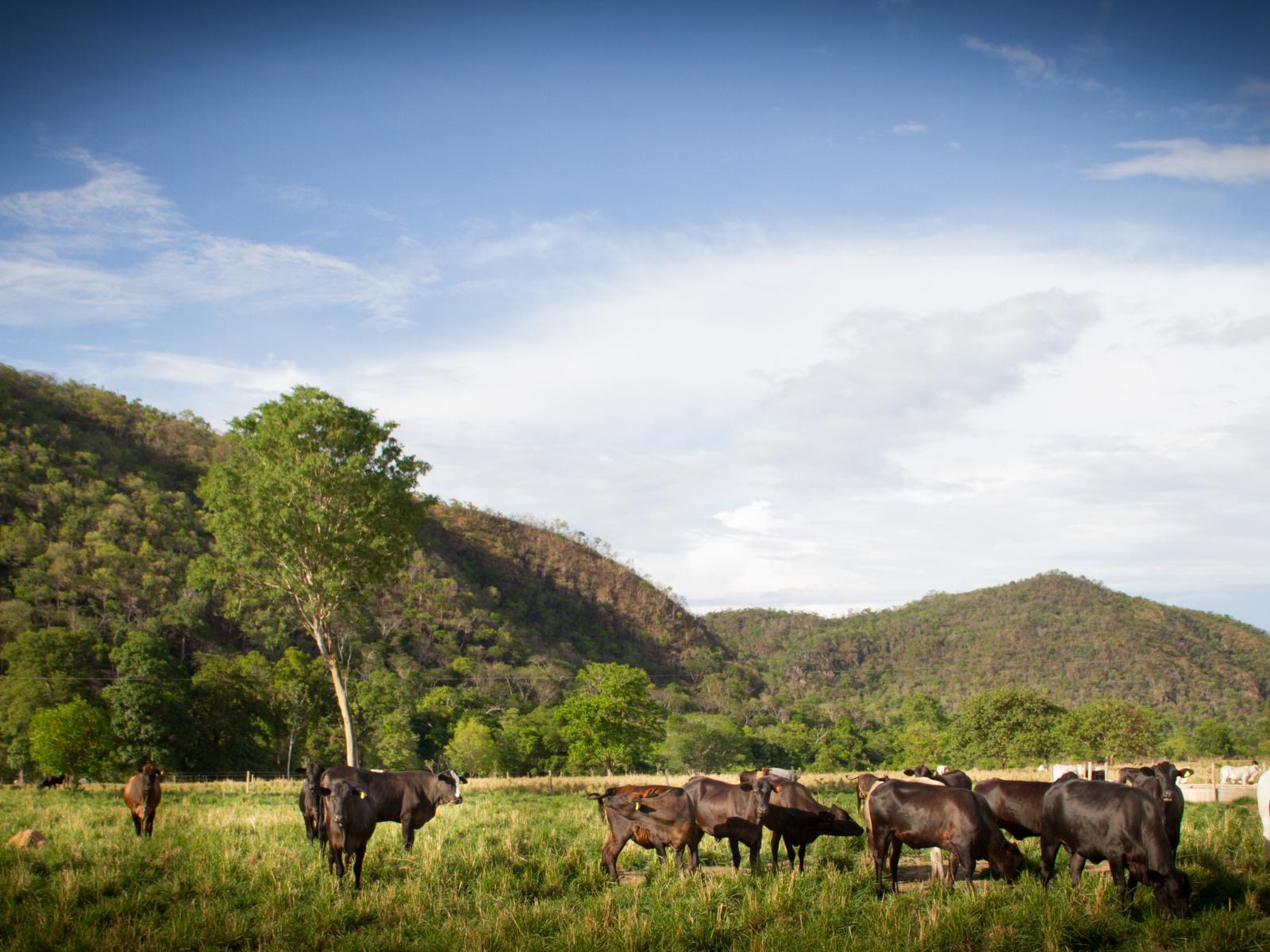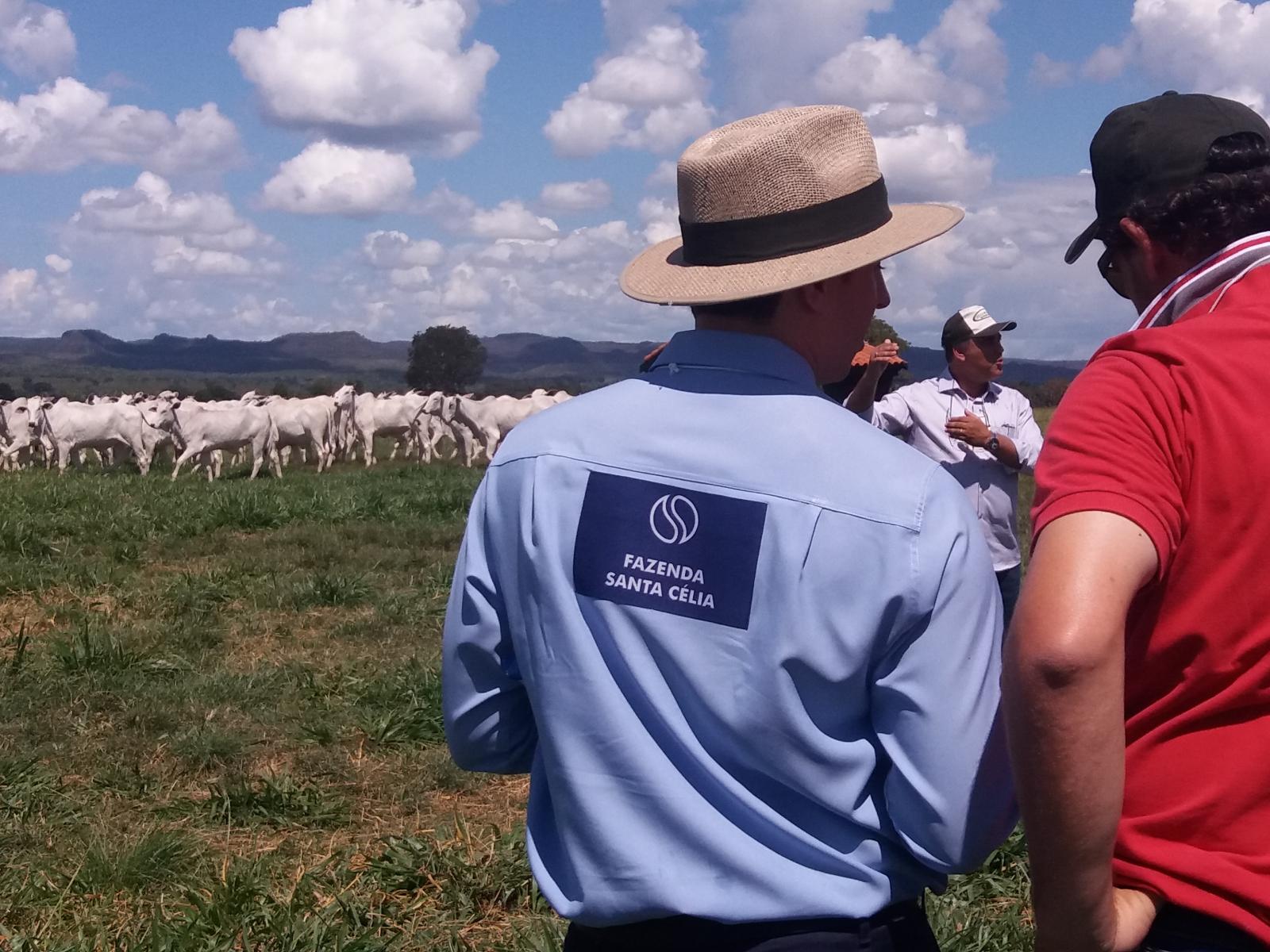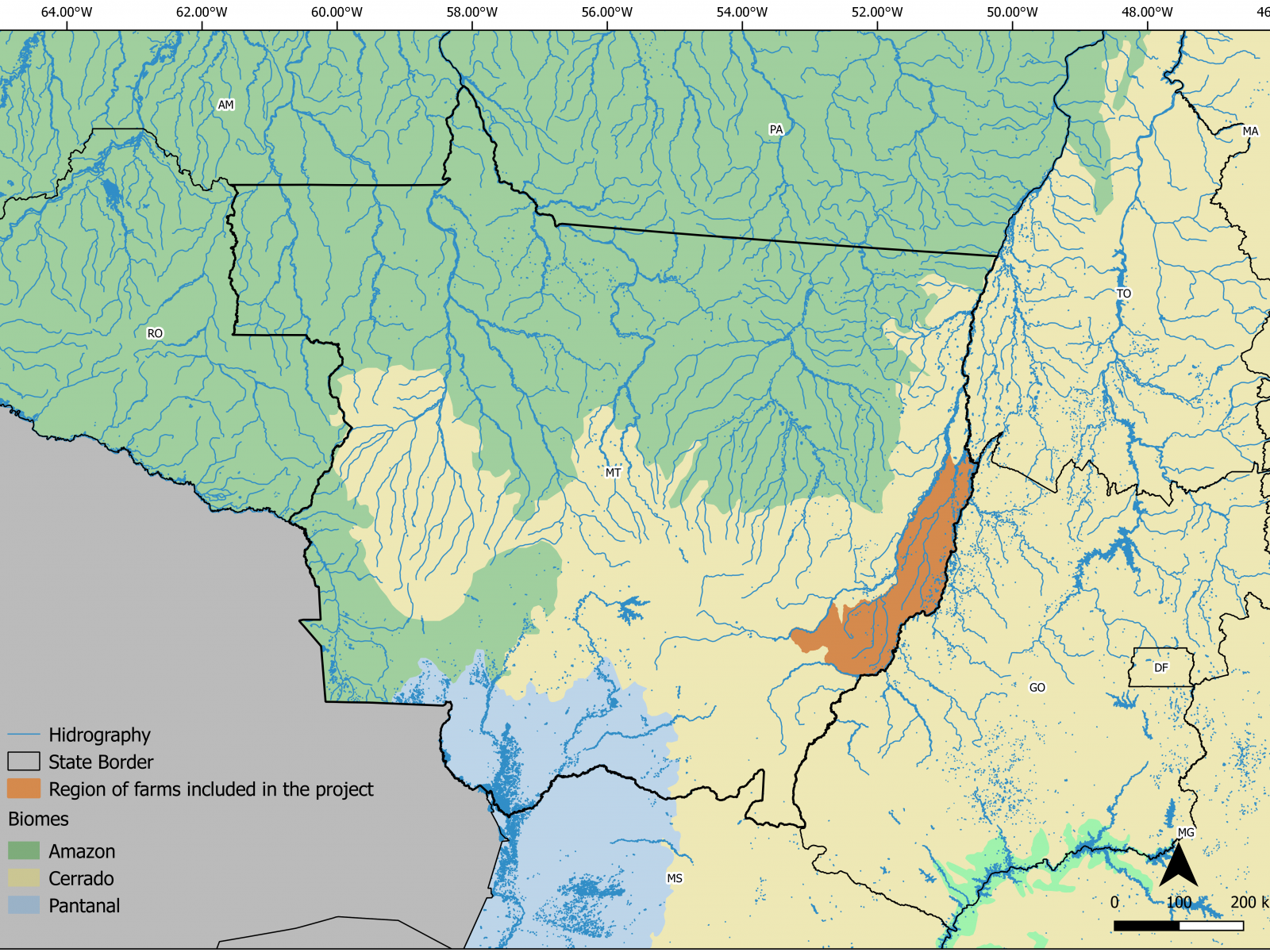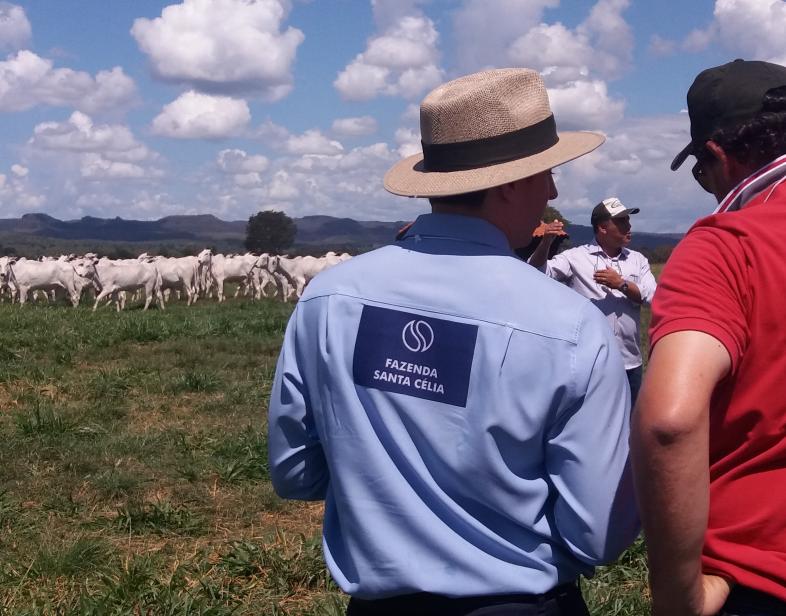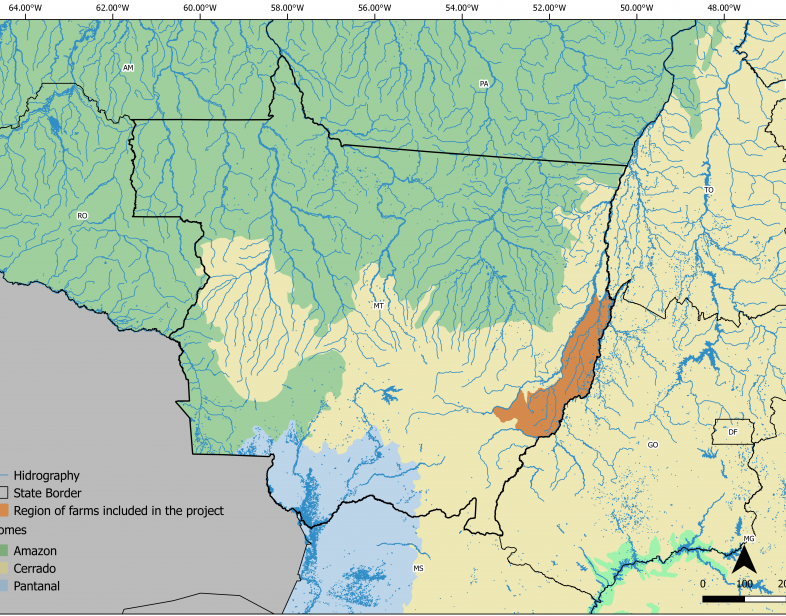An Overview Of Our Solution
Brazil is the 7th emitter of greenhouse gases (GHG) in the world, and agriculture is the second sector responsible for emissions, where beef cattle accounts for 17% of the total country GHG. In this context, Imaflora works by creating solutions to reduce climate change promoting low-carbon agriculture. The Garantia Araguaia Project is an initiative of Imaflora in partnership with Grupo Roncador and the League of Araguaia located in the transition of Amazon and Brazilian Cerrado. It aims to promote best agricultural practices, avoid deforestation and reduce emissions from livestock production. The project monitors, reports and verifies ranchers’ solutions for best farming management, providing high transparency for responsible consumers. Garantia Araguaia impacts positively more than 200 thousand hectares and it has the potential to emit 50% less GHG.
- Population Impacted: 63 cattle farms, in nine municipalities
- Continent: South America
Last name
Organization type
Context Analysis
The project is being carried out in the region of the Araguaia Valley in the state of Mato Grosso with a group of cattle ranchers called League of Araguaia. The state is known for its thriving and growing agriculture, but at the same time is placed at the first in the ranking of GHG emissions due to its large production and cattle herd. The region is located in a transition area between biomes, where agriculture and pasture expansion is being impacting forests, rivers, biodiversity and local communities as indigenous tribes. The project deal with the challenge of promoting low carbon livestock practices in a large scale, developing tools for sustainable management systems. Cattle livestock production attached with best practices is an applied solution for emissions mitigation, biodiversity maintenance, economic return and local development. However, the Brazilian cattle production scenario is still below the expected levels of efficiency and has an enormous potential to be explored.
Describe the technical solution you wanted the target audience to adopt
The Monitoring, Reporting and Verifying system (MRV) is a mechanism to evaluate performance, meet sustainability requirements and achieve GHG emissions reductions on the ground. It is based in three steps: monitor socioenvironmental and climate indicators; report the continuous improvements and verify the achievements. This solution is a tool for best farming management and to be effective, needs the full participation of the rancher starting with the self-evaluation its own farm supported by a checklist of indicators as: environmental, carbon, social, productive, management and the quality of the product. After this assessment, the producer receives the performance report with an analysis of the strengths and opportunities for improvement. The project technician along with the producer will create an action plan to adress solutions including mitigation strategies. This system has embedded in an annual cycle, where the levels of attendance to the requirements are progressive.
Type of intervention
Describe your behavioral intervention
The interventions happen on the ground when each farm accesses its level of compliance with the socioenvironmental and climate indicators and establishes the action plan. Herewith the farmer commits with continuous improvements and the positive results rise. In the first cycle of project 9 farms were reached out in a scope of 30,000 hectares with a herd of 20,000 animals and a large area of natural ecosystem. The first cycle of MRV resulted, in average, in a compliance of 81% of all indicators. Among the indicators the production management reached 93% and the environmental ones 82%, indicating a path of improvements to achieve the equilibrium between production, climate, social and environment. The project intervention is also at the group level, where producers identify common challenges and look for collective solutions, thus reducing individual costs and encouraging others to join the group and scale up the positive impacts. The economic return comes also because of the production efficiency inspiring farmers to change their behaviors, looking for a win-win result where production and conservation come together. Actual research shows that, in Brazil, almost 60 million of hectares of pasture land are degradated emitting 1 ton of CO2eq/ha/year throughout organic matter losses. Recover pasture productivity contributes with carbon sequestration and the sustainable use of open areas avoids new suppression of natural biomes that would enhance the carbon footprint.
As needed, please explain the type of intervention in more detail
In self-assessment, the producers answer 144 indicators, of which 125 are based on best agriculture practices and 19 are used to access carbon data. The environmental principle addresses the conservation of natural ecosystems, protection of wildlife, compliance with national legislation, waste control and GHG emissions. The social indicators are based on labor issues, worker's health and safety and local community relationship. The productive and management principles approach the infrastructure, land use and financial tools. The quality of the product analyzes genetics, sanity and animal welfare. The carbon indicators are related to the herd profile and age, pastures conditions and agriculture inputs. The calculation methodology is based on the GHG Protocol from the World Resource Institute, where the goal is to map emissions sources and plan mitigation strategies.
Describe your implementation
The challenge in Brazil is to reconcile production and environmental conservation in cattle livestock sector. The Amazon and Cerrado deforestation rates in 2017 were 6.947 km² and 7.408 km², respectively. Much of those impacts were due to pasture expansion to attend beef demand. Assessments shows that almost 30% of pastures land in Brazil are been degradated emitting high amounts of GHG. Brazil has the second cattle herd in the world resulting in 342 MtCO2e of direct GHG emissions in 2016 (17% of total Brazilian emission in that year). At the same time, after the Paris Agreement, the Brazilian government has committed through its National Determined Contribution (NDC) to recover 15 million hectares of degradated pastures and stop illegal deforestation by 2030. In this direction, the project aims to promote sustainable livestock practices, reduce GHG emissions and avoid deforestation. The performance report of the MRV tool gives a comparison with other farms to connect common opportunities and find solutions as a group. One of the barriers of the Brazilian livestock sector is the lack of dialogue among producers, thus by establishing a healthy relationship between them; the volume of beef cattle becomes commercially attractive to large slaughtering houses that look for stability of beef supply to launch new brands. The market share is the main condition for a project success and to scale up the impact along the time. Premium prices for sustainable beef are still a challenge to overcome. The second phase of the project foresees the promotion of the sustainable beef in the domestic market. Meetings with large players as JBS and Walmart are being schedule to create the demand and ensure the maintenance and extension of the positive impacts. Beside that League of Araguaia promoted a “field day” to show other ranchers the results of the project and invites them to join the group as they are connecting with possible buyers and will need larger volume of beef to negotiate.
External connections
The main partner of the project is the League, a set of producers that seek the development, implementation and replication of a sustainable model of livestock production anchored in solid attributes. The Roncador Group is a member of the League and sponsor of the pilot phase along with Imaflora. As it was mentioned before, Walmart and JBS may become future partners or advisors of the group to support the business model that is being developed. Researchers from EMBRAPA also have been working in those farms, measuring the carbon stocks in the soil. Technical support used to develop indicators database and carbon calculation came from: Rainforest Alliance Certified, Sustainable Livestock Indicators Guide (Brazilian Roundtable for Sustainable Livestock - GTPS), Best Agricultural Practices (Embrapa) and World Resource Institute (WRI- GHG Protocol). Imaflora as a civil society is active in forums and roundtables related to Climate Change, Forest and Agriculture aiming to influence public and private policies through scientific studies, technical reports, field projects and international partnerships. Garantia Araguaia project strengthened Imaflora’s background on sustainable livestock strategies and is an example of conservation and production link. These results will be shared with multi-stakeholders groups that Imaflora is a member as: GTPS, Soy WG, Coalition of Climate Forest and Agriculture, Cerrado WG, Forest Code Observatory, Climate Observatory and in the next COP 24.
Who adopted the desired behaviors and to what degree?
The pilot project started with 4 farms and along the implementation phase 5 news farms joined the group. All producers carried out the monitoring phase, responding to the self-assessment. All of them also received the performance report and commit with the action plan. In general, the agricultural sector is very traditional and has resistance for new technologies and trends. At the same time, they are the first to suffer from the negative impacts of climate change as water shortage, high temperatures and droughts. Brazilian cattle herd is around 210 million animals and Mato Grosso state is responsible for 10% of this production, besides the large areas of natural ecosystems. For these reasons, choose ranchers from Mato Grosso are strategic and the possibility to scale up the size of the group fits to the business model attending the market demand.
How did you impact natural resource use and greenhouse gas emissions?
The project has identified positive environmental highlights, such as conservation of protected areas, maintenance of biomes, water springs and riparian areas. The wastes are disposed correctly and the group adopts best agricultural practices as soil conservation. For this analysis, the checklist of indicators considered the main sources of GHG emission and removal (emission balance calculation): characteristics of the herd, production inputs and pasture conditions.The methodology used was based on the Intergovernmental Panel on Climate Change (IPCC) guidelines associated with on-site measurements and the GHG-Protocol Agricultural Tool (WRI). The different GHG resulting from livestock production (CH4, N2O, CO2) were transformed into the equivalent of CO2. The results showed that the best practices achieved 28,306 hectares of pastures land and 19,000 animals, compliance with 81% of the total socioenvironmental indicators and the emission average per hectare of pasture was 1,67 tCO2e.
What were some of the resulting co-benefits?
Co-benefits of Garantia Araguaia project are related to the macro region of Medio Araguaia which includes larges rivers from the Araguaia river basin. The importance to protect the natural ecosystems is high due to the alarming situation of enormous rates of deforestations resulting from agriculture expansion. In some cases the deforestation threats indigenous lands as Tapirapé, Xavantes and Karajás, population who needs the natural resources to preserve their traditions. Another co-benefit is related to the quality of the product (beef) for the final consumer,which is becoming more demanding for sustainable products. The development model within the project context can support policies enhancement and be replied in other similar situations.
Sustainability
The project funding relied on the market-based strategy. The market share is the main condition for the project success and to scale up the impact along the time. Currently, Imaflora and partners are prospecting differentiated markets to negotiate the sustainable beef and then reach more producers. Meetings with JBS company and Walmart are schedule to present the strategy which can also be positive for their reputational image.
The resources for a new project cycle could come from grant funding or government subsidies. However, no financial opportunities were available in these categories, so the project was limited to private investments from Grupo Roncador (the most active member of the League of Araguaia).
Return on investment
The investment to develop the project was 50 thousand reais (around 15 thousand USD), used to carry out the entire structure of the MRV System, approach the ranchers, evaluate their self-assessment, calculate emissions balance, verify a farm-sample and produce the final report. Also the market prospecting phase (with Walmart and JBS) is included in this budget and it is a key piece to guarantee the economic return on investment when the sustainable beef achieves responsible consumers. Comparing with the potential return selling the entire herd, the investment was relatively low and essential to enhance the image of the producers, linking the socioenvironmental attributes to their beef brand.
How could we successfully replicate this solution elsewhere?
As Imaflora is a member of the GTPS, a multi-stakeholder group aiming to “Promote the sustainable development of livestock through supply chain linkage, continuous improvement and dissemination of information”.Actually, the owner of Grupo Roncador is the president of GTPS increasing the scope of influence of ranchers. The project can be adapted to any other region and agriculture production system. Also, it is an inclusive system, where there are no minimum criteria for the farmer to enter. The monitoring and report of socioenvironmental and climate indicators were never done before in Brazil as far as we know; it is an innovation and a trend due to the Brazilian commitment in the Paris Agreement.Estimations showed that this solution requires USD 2,000 for each participating. For a new cycle, it would be possible to increase adhesion in 100% if USD 40,000 of financing were raised. The strategic partnerships involve researchers, NGOs, beef industry and the “field days” include ranchers.
